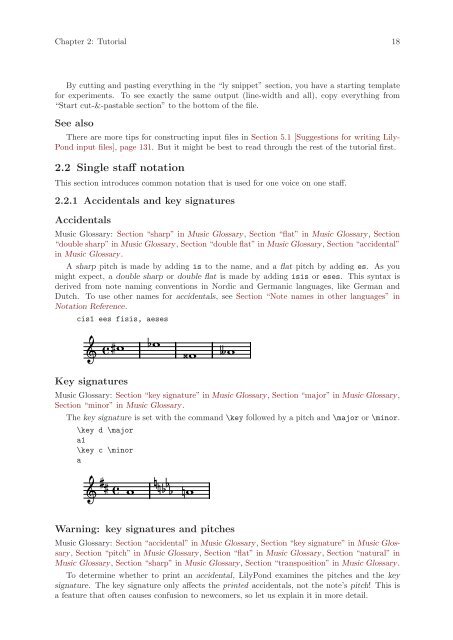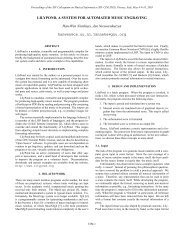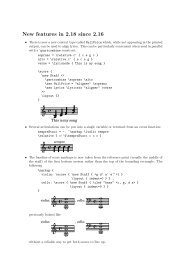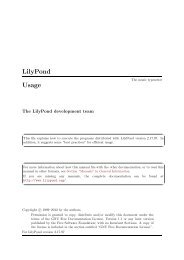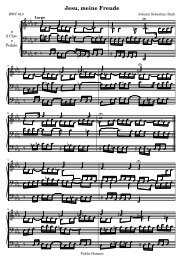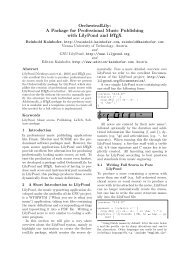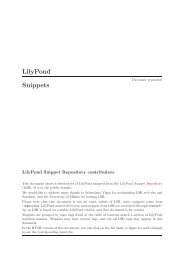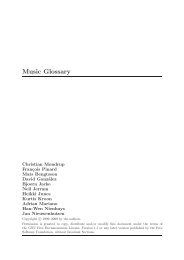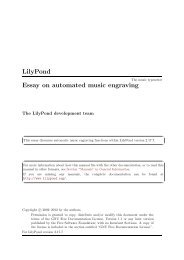You also want an ePaper? Increase the reach of your titles
YUMPU automatically turns print PDFs into web optimized ePapers that Google loves.
Chapter 2: Tutorial 18<br />
By cutting and pasting everything in the “ly snippet” section, you have a starting template<br />
for experiments. To see exactly the same output (line-width and all), copy everything from<br />
“Start cut-&-pastable section” to the bottom of the file.<br />
See also<br />
There are more tips for constructing input files in Section 5.1 [Suggestions for writing Lily-<br />
Pond input files], page 131. But it might be best to read through the rest of the tutorial first.<br />
2.2 Single staff notation<br />
This section introduces common notation that is used for one voice on one staff.<br />
2.2.1 Accidentals and key signatures<br />
Accidentals<br />
Music Glossary: Section “sharp” in Music Glossary, Section “flat” in Music Glossary, Section<br />
“double sharp” in Music Glossary, Section “double flat” in Music Glossary, Section “accidental”<br />
in Music Glossary.<br />
A sharp pitch is made by adding is to the name, and a flat pitch by adding es. As you<br />
might expect, a double sharp or double flat is made by adding isis or eses. This syntax is<br />
derived from note naming conventions in Nordic and Germanic languages, like German and<br />
Dutch. To use other names for accidentals, see Section “Note names in other languages” in<br />
Notation Reference.<br />
cis1 ees fisis, aeses<br />
� � �<br />
� � � ��<br />
� �<br />
Key signatures<br />
Music Glossary: Section “key signature” in Music Glossary, Section “major” in Music Glossary,<br />
Section “minor” in Music Glossary.<br />
The key signature is set with the command \key followed by a pitch and \major or \minor.<br />
\key d \major<br />
a1<br />
\key c \minor<br />
a<br />
�<br />
� � � � �<br />
� �<br />
� � � �<br />
Warning: key signatures and pitches<br />
Music Glossary: Section “accidental” in Music Glossary, Section “key signature” in Music Glossary,<br />
Section “pitch” in Music Glossary, Section “flat” in Music Glossary, Section “natural” in<br />
Music Glossary, Section “sharp” in Music Glossary, Section “transposition” in Music Glossary.<br />
To determine whether to print an accidental, <strong>LilyPond</strong> examines the pitches and the key<br />
signature. The key signature only affects the printed accidentals, not the note’s pitch! This is<br />
a feature that often causes confusion to newcomers, so let us explain it in more detail.


